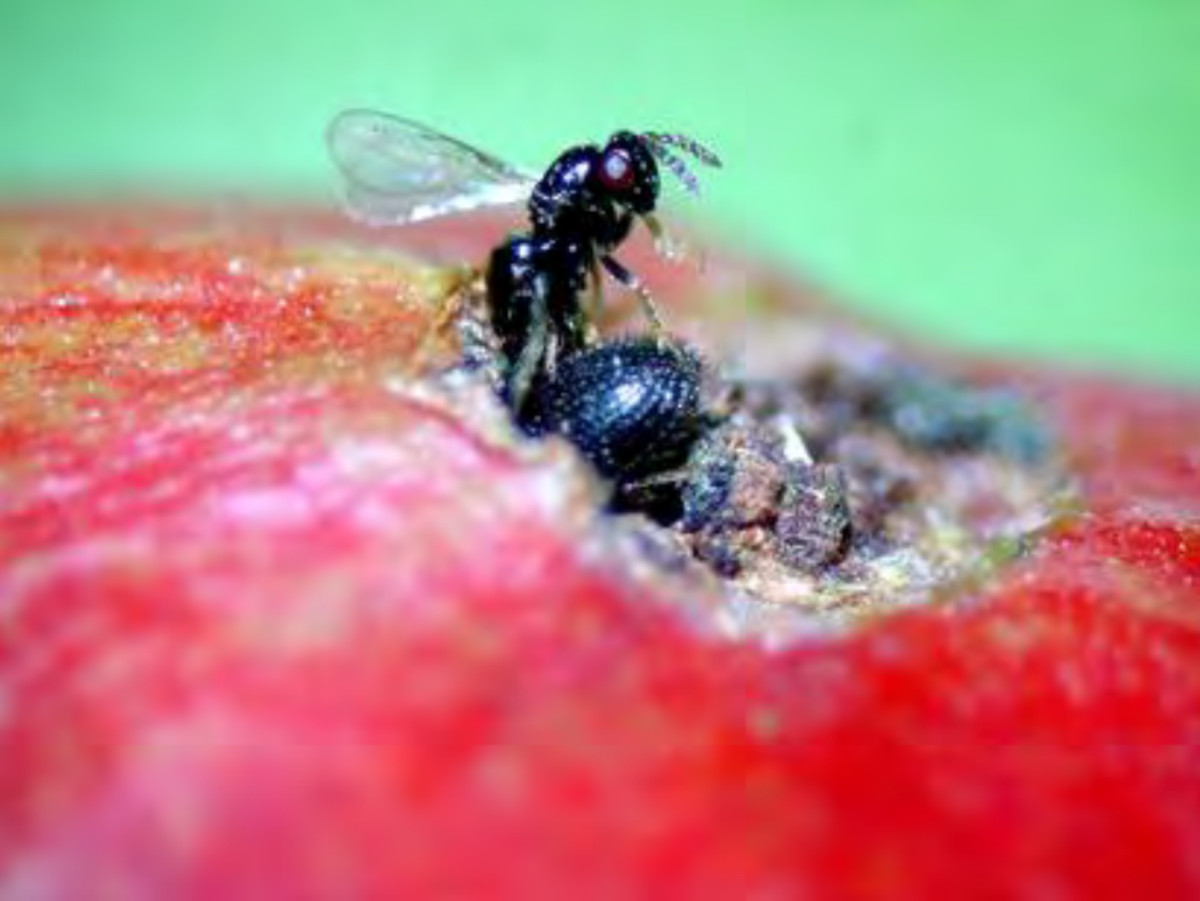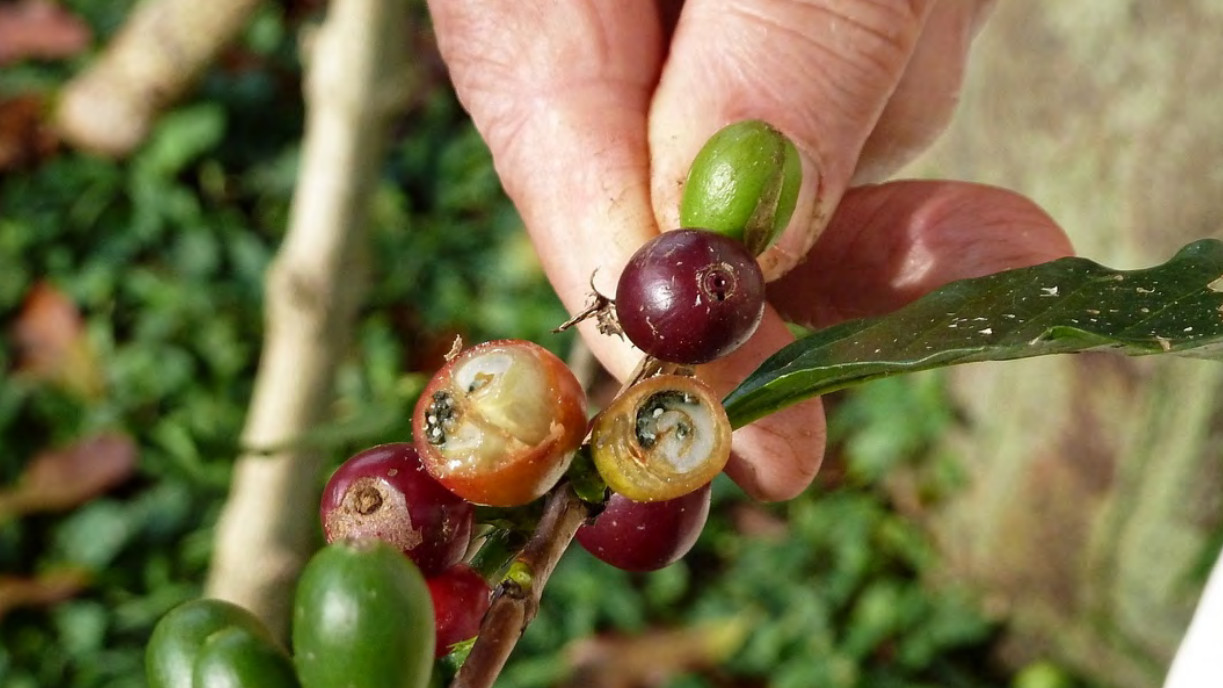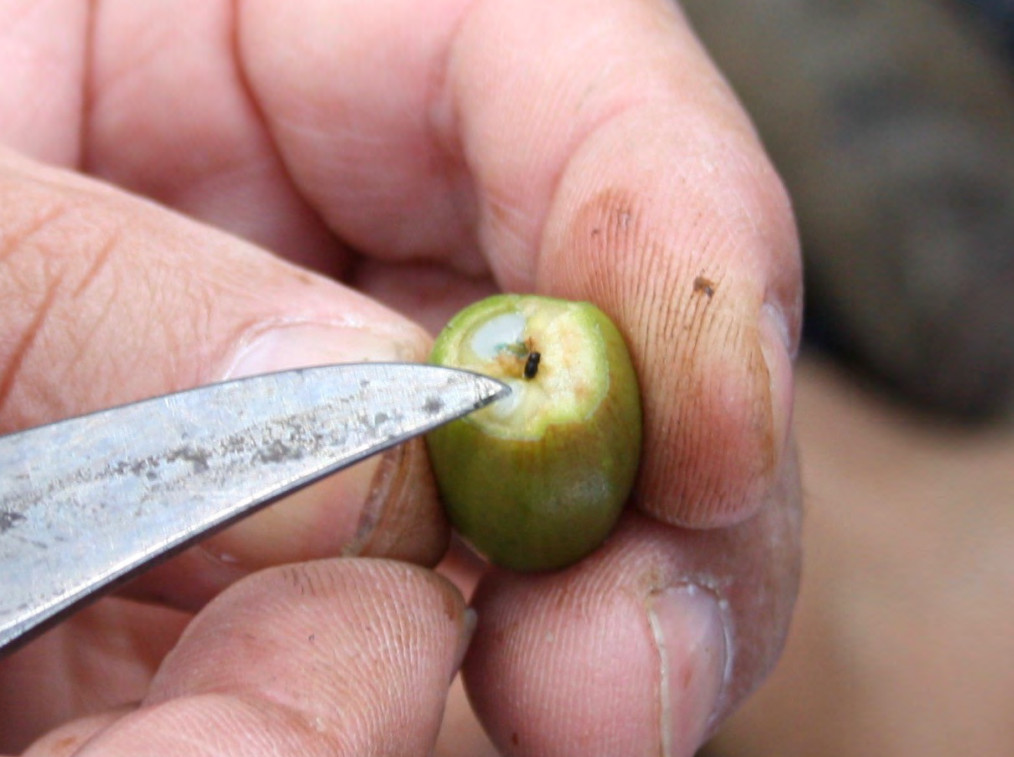
Image from Final EA: “Figure 3: Phymastichus coffea parasitizing CBB in berry. Photo courtesy of Cenicafé.”
(BIVN) – The Final Environmental Assessment for the proposed field release of a parasitoid wasp to combat the destructive coffee berry borer in Hawaiʻi has been published, along with a Finding of No Significant Impact.
The application for a permit to release the wasp was submitted the USDA-ARS (Agricultural Research Service) in Hilo and the Hawaiʻi Department of Agriculture Plant Plant Quarantine Branch.
From the summary in the Final EA document:
The coffee berry borer (CBB), Hypothenemus hampei (Ferrari), (Coleoptera: Curculionidae: Scolytinae) is the most destructive insect pest of coffee globally. Though endemic to Central Africa, CBB is now found in almost every coffee-producing country in the world. In 2010, it first invaded the island of Hawai’i where high quality coffee is the second largest cash crop, valued at more than $55 million during the 2020-21 season. Coffee berry borer has since invaded coffee on the islands of Oahu, Maui and Kaui. Coffee crop loss due to CBB is estimated at $7.7 million. CBB has had the effect of making coffee farming more intensive and less profitable: damage causes significant losses in yield and alters the flavor profile of salvageable coffee beans. If left unmanaged, CBB can damage ˃90% of the crop.
The primary means of control in Hawaii is using the microbial insecticide Beauveria bassiana and sanitation (removal of all coffee berries after harvest). Biological control of CBB using parasitoids has been conducted in many countries around the world, especially in Latin America (Mexico south to Brazil) and has potential for Hawaii. One of the most promising agents is a parasitoid wasp, Phymastichus coffea LaSalle (Hymenoptera: Eulophidae). Phymastichus coffea is a primary, gregarious, idiobiont endoparasitoid of CBB adult females. After being parasitized by P. coffea, females stop oviposition and usually die after 4-12 days. Therefore, P. coffea was chosen as a potential biological control agent and was brought from Colombia into a quarantine containment facility in Volcano, Hawaii for host range testing to determine whether the parasitoid might attack non-target species and thereby pose a risk to the environment.
The wasp “was found to attack four other species in the genus Hypothenemus,” but it did not attack any of the native and beneficial beetles tested.
“Phymastichus coffea appears to be host-specific at the genus level, and only able to survive on species closely related to H. hampei,” the Final EA states. “Therefore, release of P. coffea for control of CBB in Hawaii coffee should cause no harm to the environment.”
The document says “it is expected that P. coffea will become established as a classical biological control agent, providing sustained population suppression of CBB in Hawaii. If establishment of P. coffea is variable or unsuccessful in some areas, additional releases will made, or augmentative releases might be considered in some locations.”
The documents says the first releases of the wasp will be made in the South Kona district, “in the main coffee growing region as it is close to the USDA ARS laboratory and University of Hawaii experiment station which will facilitate monitoring.”



by Big Island Video News3:23 pm
on at
STORY SUMMARY
HAWAIʻI - There has been a Finding of No Significant Impact for the proposed field release of a parasitoid wasp, Phymastichus coffea, for the biological control of CBB in Hawaii.